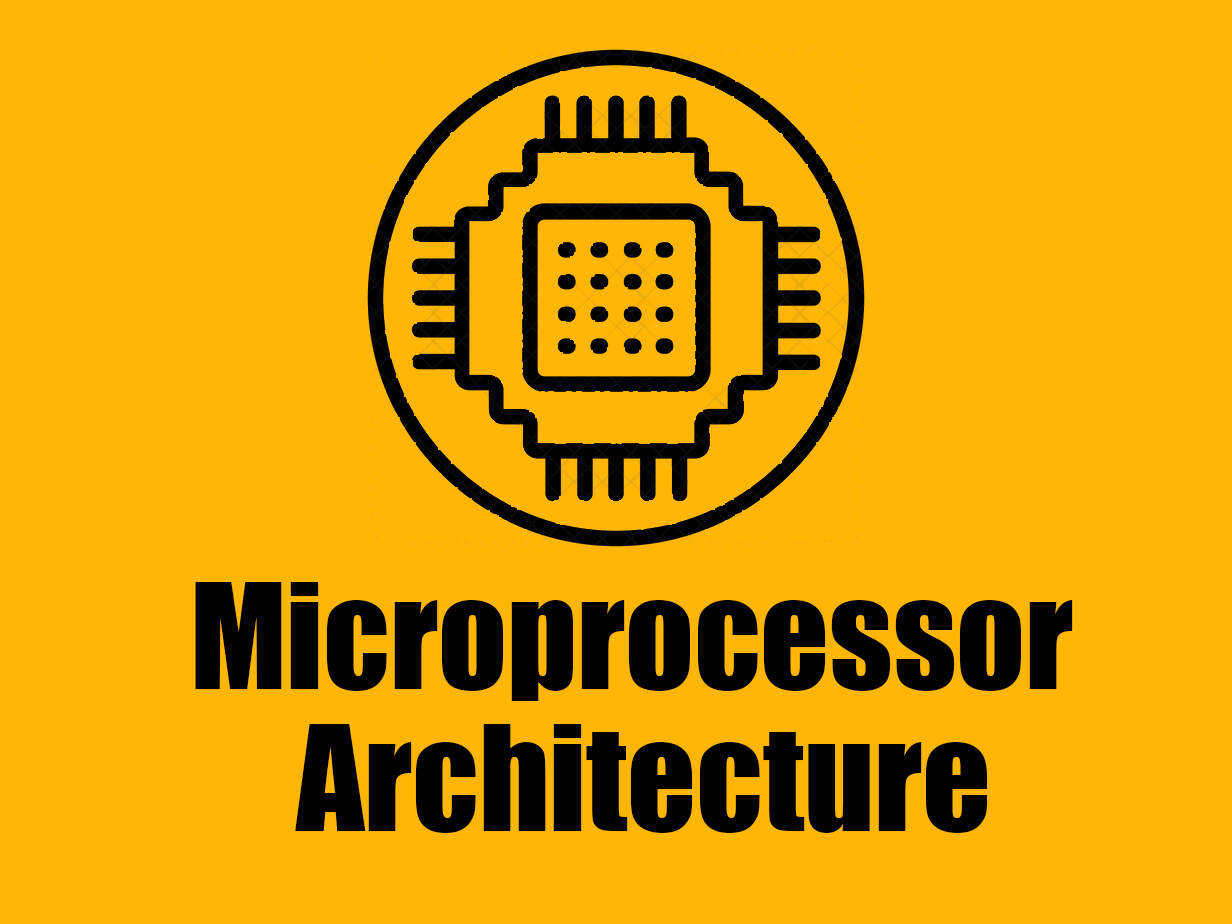Microprocessor Architecture
₹299.00
₹199.00

Microprocessor Architecture
Microprocessor Architecture is semester 2 subject of BSc IT offered by Mumbai University. The course Microprocessor Architecture contains following subtopics
Microprocessor, microcomputers, and Assembly Language contains following subtopics such as Microprocessor, Microprocessor Instruction Set and Computer Languages, From Large Computers to Single-Chip Microcontrollers, Applications. Microprocessor Architecture and Microcomputer System: Microprocessor Architecture and its operation’s, Memory, I/O Devices, Microcomputer System, Logic Devices and Interfacing, Microprocessor-Based System Application. 8085 Microprocessor Architecture and Memory Interface: Introduction, 8085 Microprocessor unit, 8085-Based Microcomputer, Memory Interfacing, Interfacing the 8155 Memory Segment, Illustrative Example: Designing Memory for the MCTS Project, Testing and Troubleshooting Memory Interfacing Circuit, 8085-Based Single-Board microcomputer.
Interfacing of I/O Devices Basic Interfacing concepts, Interfacing Output Displays, Interfacing Input Devices, Memory Mapped I/O, Testing and Troubleshooting I/O Interfacing Circuits. Introduction to 8085 Assembly Language Programming: The 8085 Programming Model, Instruction Classification, Instruction, Data and Storage, Writing assembling and Execution of a simple program, Overview of 8085 Instruction Set, Writing and Assembling Program. Introduction to 8085 Instructions: Data Transfer Operations, Arithmetic Operations, Logic Operation, Branch Operation, Writing Assembly Languages Programs, Debugging a Program.
Programming Techniques With Additional Instructions contains following subtopics such as Programming Techniques: Looping, Counting and Indexing, Additional Data Transfer and 16-Bit Arithmetic Instructions, Arithmetic Instruction Related to Memory, Logic Operations: Rotate, Logics Operations: Compare, Dynamic Debugging. Counters and Time Delays contains following subtopics such as Counters and Time Delays, Illustrative Program Hexadecimal Counter, Illustrative Program: zero-to-nine (Modulo Ten) Counter, Generating Pulse Waveforms, Debugging Counter and Time-Delay Programs. Stacks and Sub-Routines contains following subtopics such as Stack, Subroutine, Restart, Conditional Call, Return Instructions, Advanced Subroutine concepts.
Code Conversion, BCD Arithmetic, and 16-Bit Data Operations: BCD-to-Binary Conversion, Binary-to-BCD Conversion, BCD-to Seven-Segment-LED Code Conversion, Binary-to-ASCII and ASCII to-Binary Code Conversion, BCD Addition, BCD Subtraction, Introduction To Advanced Instructions and Applications, Multiplication, Subtraction With Carry. Software Development System and Assemblers: Microprocessors-Based Software Development system, Operating System and Programming Tools, Assemblers and Cross-Assemblers, Writing Program Using Cross Assemblers. Interrupts: The 8085 Interrupt, 8085 Vectored Interrupts, Restart as S/W Instructions, Additional I/O Concepts and processes.
The Pentium and Pentium Pro microprocessors contains following subtopics such as Introduction, Special Pentium registers, Memory management, Pentium instructions, Pentium Pro microprocessor, Special Pentium Pro features. Core 2 and later Microprocessors: Introduction, Pentium II software changes, Pentium IV and Core 2, i3, i5 and i7. SUN SPARC Microprocessor contains following subtopics such as Architecture, Register file, data types and instruction format.
A microprocessor is a computer processor where the data processing logic and control is included on a single integrated circuit, or a small number of integrated circuits. The microprocessor is a multipurpose, clock-driven, register-based, digital integrated circuit that accepts binary data as input, processes it according to instructions stored in its memory, and provides results (also in binary form) as output. Microprocessors contain both combinational logic and sequential digital logic. Microprocessors operate on numbers and symbols represented in the binary number system. The integration of a whole CPU onto a single or a few integrated circuits using Very-Large-Scale Integration (VLSI) greatly reduced the cost of processing power. Integrated circuit processors are produced in large numbers by highly automated metal-oxide-semiconductor (MOS) fabrication processes, resulting in a relatively low unit price. Single-chip processors increase reliability because there are many fewer electrical connections that could fail. As microprocessor designs improve, the cost of manufacturing a chip (with smaller components built on a semiconductor chip the same size) generally stays the same according to Rock’s law.
In computer programming, assembly language (or assembler language),[often abbreviated asm, is any low-level programming language in which there is a very strong correspondence between the instructions in the language and the architecture’s machine code instructions. Because assembly depends on the machine code instructions, every assembly language is designed for exactly one specific computer architecture. Assembly language may also be called symbolic machine code. Assembly code is converted into executable machine code by a utility program referred to as an assembler. The conversion process is referred to as assembly, as in assembling the source code. Assembly language usually has one statement per machine instruction, but comments and statements that are assembler directives, macros, and symbolic labels of program and memory locations are often also supported. The term “assembler” is generally attributed to Wilkes, Wheeler and Gill in their 1951 book. The preparation of programs for an electronic digital computer, who, however, used the term to mean “a program that assembles another program consisting of several sections into a single program”. The Intel 8085 (“eighty-eighty-five”) is an 8-bit microprocessor produced by Intel and introduced in March 1976. It is a software-binary compatible with the more-famous Intel 8080 with only two minor instructions added to support its added interrupt and serial input/output features. However, it requires less support circuitry, allowing simpler and less expensive microcomputer systems to be built. The “5” in the part number highlighted the fact that the 8085 uses a single +5-volt (V) power supply by using depletion-mode transistors, rather than requiring the +5 V, −5 V and +12 V supplies needed by the 8080. This capability matched that of the competing Z80, a popular 8080-derived CPU introduced the year before. These processors could be used in computers running the CP/M operating system.
Prepare For Your Placements: https://lastmomenttuitions.com/courses/placement-preparation/
![]()
/ Youtube Channel: https://www.youtube.com/channel/UCGFNZxMqKLsqWERX_N2f08Q
Follow For Latest Updates, Study Tips & More Content!
Course Features
- Lectures 8
- Quizzes 0
- Duration 50 hours
- Skill level All levels
- Language English
- Students 391
- Certificate No
- Assessments Yes

